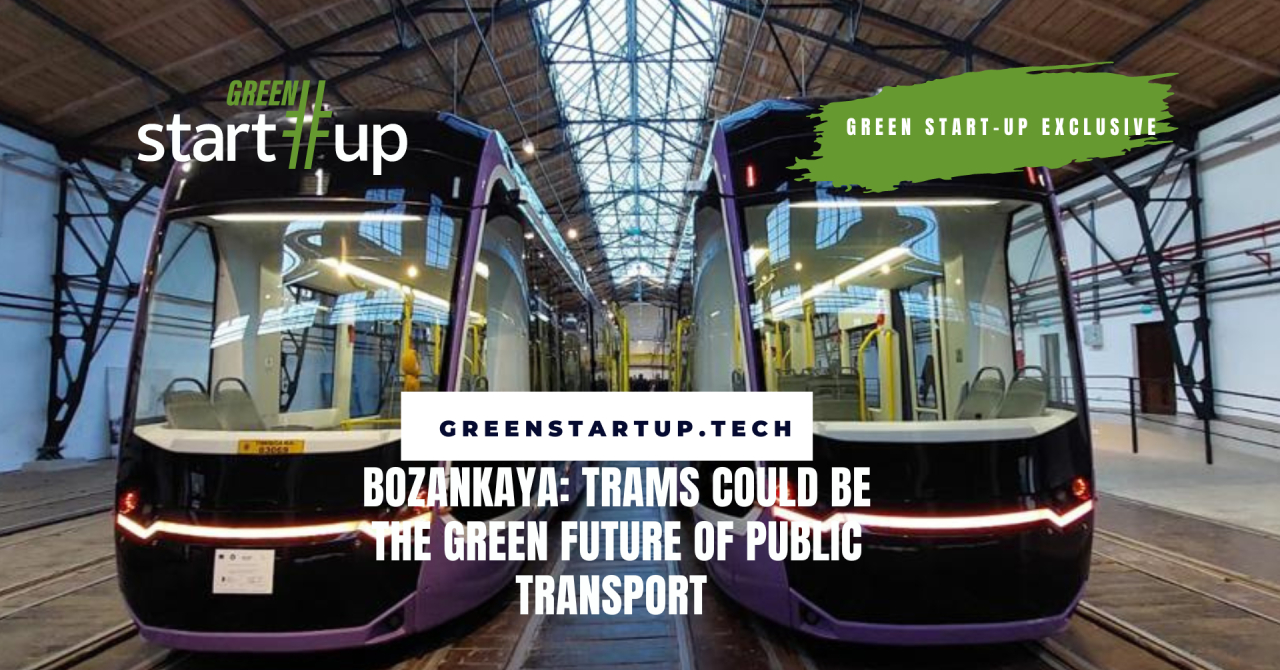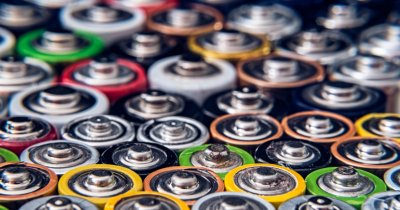Tramways are a mean of transport for the surface area that works similarly to the metro, just that it's smaller in size. It is, of course, still larger than the bus and has its own advantage over that alternative. Tramways usually have separated tracks from the rest of the traffic, meaning that they don't have to put up with as many jams, while also being able to fit significantly more people.
Also, nowadays, all trams are electric-powered, so they are more sustainable than diesel or hybrid buses, as full electric models are still not exactly a common thing to encounter. What separates old from modern trams is their efficiency and commodities, such as more comfortable seats and air conditioning, while they also tend to run smoother, thanks to stabilizers and lowered decks.
Next-generation trams for cleaner cities
We talked to Aytunç Günay, Chief of the Board Council at Bozankaya, a Turkish tramway manufacturer, to find out more about how their tramways compare to other offerings, what makes an efficient tramway and how this mean of transport can be the future of green cities.
Originally a company powered by 20 employees, Bozankaya now has 1.000, out of which 100 are specialized R&D engineers and its mission is to deliver innovative and competitive products in the public transportation sector.
The company offers a wide range of products for public transport operators, such as tramways, trolleybuses and even metros. Electric buses are also part of the company's line of products and Aytunç Günay told us that they "stand out for their advanced technology, environmental friendliness, and contribution to reducing carbon emissions in cities."
The company's engineers, Aytunç told us, are developing the batteries, based on sourced individual cells, as well as the battery management systems required for those to function properly. Additionally, we learned that for exceptional situations, such as power interruptions, all of Bozankaya's electric vehicles are equipped with batteries that are designed to maintain the base functions operational, to ensure the safety of the passengers.
To power up the batteries as fast and efficiently as possible, R&D experts also designed special charging stations, which can juice the batteries quickly, without compromising on the durability of the cells over time.
Bozankaya tramways in Romania
Timișoara and Iași are two Romanian cities where Bokanzaya's electric trams have already been implemented and as we've been told by the company's officials, both the municipalities and the customers have positively received the trams as being modern, faster and more reliable for mass-commuting.
So far, Bozankaya has delivered 37 trams in our country, 16 in Iași and 21 in Timișoara, with an additional order of 40 trams currently being in production. These units are to be delivered to Romania's western city.

Regarding the efficiency of its trams, the company has a few strategies to improve that over the competition. First of all, Green Start-Up was told that "we enhance energy efficiency through the utilization of lightweight and durable materials, incorporating elements of aerodynamic design, and introducing innovations like regenerative braking. Bozankaya high effective energy system has the benefit of saving up to 30%."
Single Cell Loading is one of the company's technologies, implemented on each battery cell. It is designed to monitor the temperature and state of charge of the individual cells, among other things, to ensure they operate properly.
This technology also aids during charging sessions, when some of the cells might be able to charge faster or slower than the rest, so that they would need to be specifically controlled to avoid overheating and to boost overall charging efficiency.
As far as what an ideal city in terms of public transport would be like, Aytunç told us that it would have to "boast an integrated network of electric buses, trams, and subways". Thus, there is no single-winner when it comes to what public transport solution is the best. Instead, public transport is a complex network of multiple units working together to ensure people can reach all important corners of a city fast and reliably.
Public transport versus personal car, an easy environmental choice
Also, when it comes to convincing people use public transport more and leave their car at home, operators must ensure that their transport systems are well-integrated and that they cover all of the important parts of the city, according to Bozankaya's representative.
Additionally, he said that "offering competitive pricing, discounted fares, or incentives for regular commuters can make it more economically appealing." Municipalities and public transport operators must also press on the environmental benefits of public transport and that fewer cars on the road means less congestion and faster commutes.
When it comes to how fast public transport is compared to the personal car, in a well-planned city at least, Aytunç believes that trams, buses and metros have the leverage. This is because they tend to run on their own space and lanes, which means they can avoid traffic at times and you also don't have to look for a parking spot anymore, a time-consuming process of driving.
Despite commercializing a wide-range of public transport vehicles, Bozankaya's team believes that tramways are the best solution for cities that want efficient public transport. This is due to the fact that they can run on dedicated tracks that are separate from the rest of the traffic and they have their own right of way ahead of everyone else, meaning that they are faster and less prone to congestion.
Plus, they can transport more people at once and don't require the extensive infrastructure development and cost of implementation that a metro system does.

Tramways are also powered by electricity, meaning that they are usually more silent, as well as more eco-friendly, contributing to cleaner air along the city.
"If there is physical or financial constraint to implement tramway, the Trambus (as it hints of its name) can function like the tram establishing BRT (Bus Rapid Transit) by introducing dedicated lanes like the tramways. They can have the 25 m. length with over 200 passengers capacity. With signalization, they can work as multiple units with virtual coupling system", Bozankaya's Chief of the Board Council explained for Green Start-Up.
The advantages of modern tramways
When comparing old tramways with modern models, there are several advantages that make the latest-generation the default choice for sustainable cities, as per Bozankaya's officials. First is energy efficiency, as new models will have more efficient components that use less power. Even if we're talking about a vehicle that is not running on battery, better efficiency means less strain on the grid.
Modern tramways can have batteries incorporated, as well, which means that they may be able to run on internal power source, if the case may be. This is where another technological advancement comes in handy, in the form of regenerative breaking. This allows the tram to recover some of the energy and charge its batteries during breaking sessions.
Lighter materials and better aerodynamics also help when it comes to reducing power requirements, as modern trams can coast for longer distances before needing to accelerate again.
While it's difficult to tell how much emissions one city will be able to save by switching to public transport, Bozankaya's experts believe that millions of tons of saved emissions per year is achievable in a large city where people travel by public transport more than they do by personal car.
Bozankaya's plans for the future of green urban transport
Launching a 3rd generation of electric buses next year, Bozankaya's looking to shape the future of green public transport systems across the world and especially in Romania, one of the company's main outside markets.
By 2026, company officials also want to ready a fourth generation of e-buses, with perhaps better range, less time spent at the plug and even better safety and comfort features for passengers.
 Mihai - Cristian Ioniță
Mihai - Cristian Ioniță












Any thoughts?